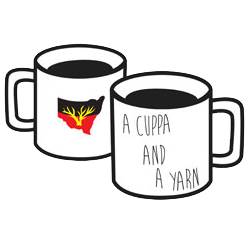
31 July, 2014
What Land Means
“When I’m out of country my spirit gives me the signs and lets me know when I have to go back home,” says NSWALC Deputy Chair Roy Ah-See. “It’s like filling your car up. All of a sudden your fuel light comes on.”
In the Aboriginal worldview we often say that we’re part of the land and the land is part of us. It can’t be one or the other.Whether its red dirt, Mallee scrub, golden beaches or arid plains, land has a different meaning – but one story. Without it, our mob gets sick.
The loss of land means much more than a loss of livelihood. It has a social impact. It affects traditional law, identity, culture and the stories of our ancestors. Alcoholism, crime and family dysfunction are widely accepted as secondary symptoms of dispossession. On top of this is economic impoverishment.
Combine these factors and this is why Land Rights remain at the heart of Aboriginal rights. To reclaim land is to reclaim what was ours and establish our place in society. It’s also about creating a sustainable livelihood and a wealth base. Our future lies in our land.
The History of Land Rights
The Aboriginal Land Rights struggle that began in 1770, when James Cook raised the British flag on the east coast of Australia, is based on the doctrine of terra nullius. This denied Australia’s original custodians any rights on the land that had nurtured them for over 50,000 years.
Although the British government accepted as early as the 1830s that Aboriginal people had some legal claim, it would be nearly another 150 years before the birth of the Land Rights movement.
In New South Wales the grassroots struggle centred on the Black Theatre in Redfern. It was here, in 1977, that over 200 Aboriginal activists and community members lobbied for Land Rights and a non-statutory NSW Aboriginal Land Council (NSWALC) was first established. Chaired by freedom fighter, Kevin Cook, this demanded the abolition of the Aboriginal Lands Trust.
In 1983 the Aboriginal Land Rights Act in NSW was passed. This established a three-tiered system of Aboriginal Land Councils (state, regional and local). For the first time in NSW, a government acknowledged that Aboriginal peoples had prior ownership of the land.
The Act meant that crown land (vacant or not) could be claimed provided it was not used needed or occupied. In the majority of cases Aboriginal Land Councils would receive ordinary freehold title, although there is also joint management of national parks. Today the land claims process is the only form of compensation for dispossession of land.
This landmark legislation recognises the extent of dispossession and forced removal in NSW by not requiring the claimant Land Council to show any traditional attachment to land claimed.
“1983 was a victory that vindicated the struggle and sacrifices of our champions”, says NSWALC Chair Craig Cromelin. “Since then there have been a lot of hard fought victories.”
For the first 15 years, the equivalent of 7.5 per cent of non-residential state land tax revenue was paid annually into the NSWALC statutory fund. By 1998, the Council had assets of $485 million.
Craig remembers, “We were told, ‘you’re on your own now.’ Some people would say that is a sad point. I saw it as a chance to get bigger and better. Since then the Land Rights network has been finding its way.”
Success and failures
Last year marked 30 years since the passing of the Act. During that time a total of 36,523 claims have been lodged. More than 81,505 hectares of land has been transferred during that time into the ownership of Aboriginal Land Councils valued at over $2.2 billion by present day standards, although of course not all of that land is still in Land Council hands.
But many land claims wait decades for consideration by government and nearly 26,000 land claims remain undetermined.
“We’ve still got unfinished business,” says Roy Ah-See. “What’s the net worth of 26,000 land claims? There is still a dispossession process that is happening by stealth.”
Court cases are roadblocks in the way. Barriers within government and in the bureaucracy choke the system. Changes to the Act envisaged by government and supported by NSWALC and the network, especially in relation to the determination of outstanding land claims, offer the prospect of a new constructive way forward that will empower Land Councils and facilitate the transfer of claimed land.
Some significant decisions have been handed down creating a legal precedent for future cases. In 2010 Malabar’s former police station was awarded to La Perouse Aboriginal community. This year the Awabakal Land Council succeeded in winning ownership of the historic post office in Newcastle.
Since 1983 the legislation has been under regular review. In 1990 important amendments allowed Land Councils to sell, mortgage or exchange their land. Changes to the Act also introduced a two-tier Land Council system and reduced the number of Regional Land Councils from 13 to nine.
Since then, the opportunity for commercial development of land assets has increased. Now land can be used for many purposes depending on community wishes including housing, agriculture and tourism.
In 1998 Mutawintji National Park, 120km northeast of Broken Hill, was the first national park to return to Aboriginal ownership in NSW. Through a leaseback arrangement with government, a co-management board structure is in place with Aboriginal owners (who comprise the majority on the board of management) including members of the Land Council, thereby ensuring a critical role in decision making and caretaking of ancestral lands and providing employment for local Aboriginal people.
In these cases the land and sacred sites become part of a long-term strategy in the revitalisation of Aboriginal culture and heritage as well as self-determination. Joint management between state government and Aboriginal owners means that although the Local Aboriginal Council own the land, it has leased it back to the government to facilitate its use as a national park.
The return of land continues to empower communities. “Fellas on the coast have been developing land for a long time, but their cousins over the mountains haven’t always known what they can do with their land,” says Craig Cromelin.
“Although we’ve made gains we still have a long way to go. But together we can own our past and create our future. Together we are writing a new story.”

